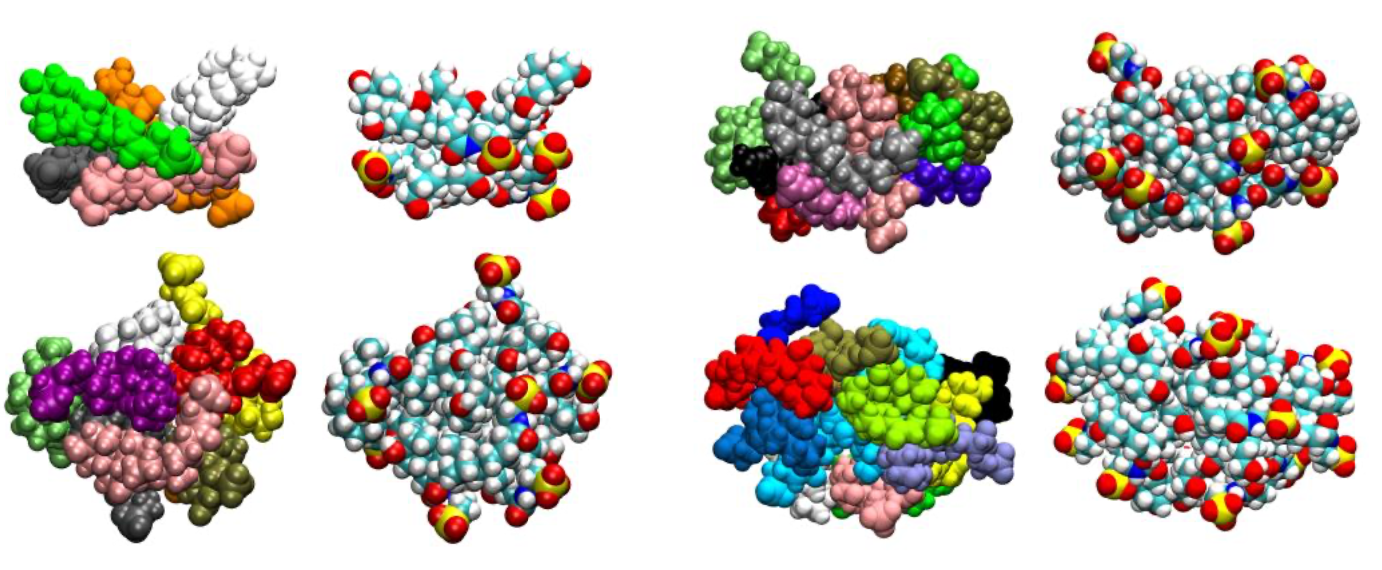Bile salts (BS) are biosurfactants released into the small intestine, which play key and contrasting roles in lipid digestion: they adsorb at interfaces and promote the adsorption of digestive enzymes onto fat droplets, while they also remove lipolysis products from that interface, solubilising them into mixed micelles. Small architectural variations on their chemical structure, specifically their bile acid moiety, are hypothesised to underlie these conflicting functionalities, which should be reflected in different aggregation and solubilisation behaviour.
In our latest paper, we have collaborated with Cécile Dreiss’ group in the Institute of Pharmaceutical Science at King’s College London, to provide a mutli-scale understanding of the mechanism of self-assembly of sodium taurocholate and sodium deoxytaurocholate bile salts, and the structure of the micelles that result from the self-assembly. Additionally we also show that these bile salts induces the solubilisation of the byproducts of lipid digestion into mixed micelles.

Full reference: “Morphology of bile salts micelles and mixed micelles with lipolysis products, from scattering techniques and atomistic simulations“, Olivia Pabois, Robert M. Ziolek, Christian D. Lorenz, Sylvain Prévost, Najet Mahmoudi, Maximilian W. A. Skoda, Rebecca J. L. Welbourn, Margarita Valero, Richard D. Harvey, Myriam M.-L. Grundy, Peter J. Wilde, Isabelle Grillo, Yuri Gerelli & Cécile A. Dreiss, Journal of Colloid & Interface Science (2020) https://doi.org/10.1016/j.jcis.2020.10.101.
